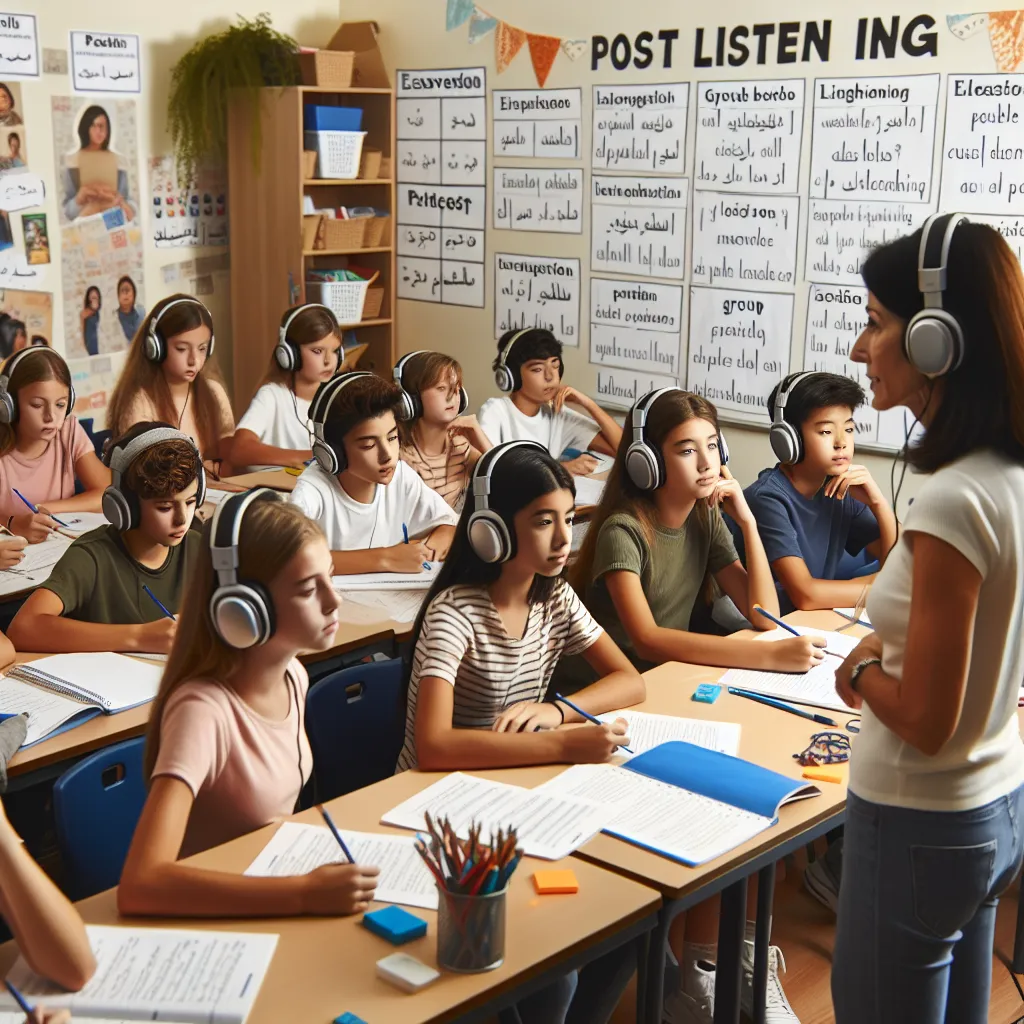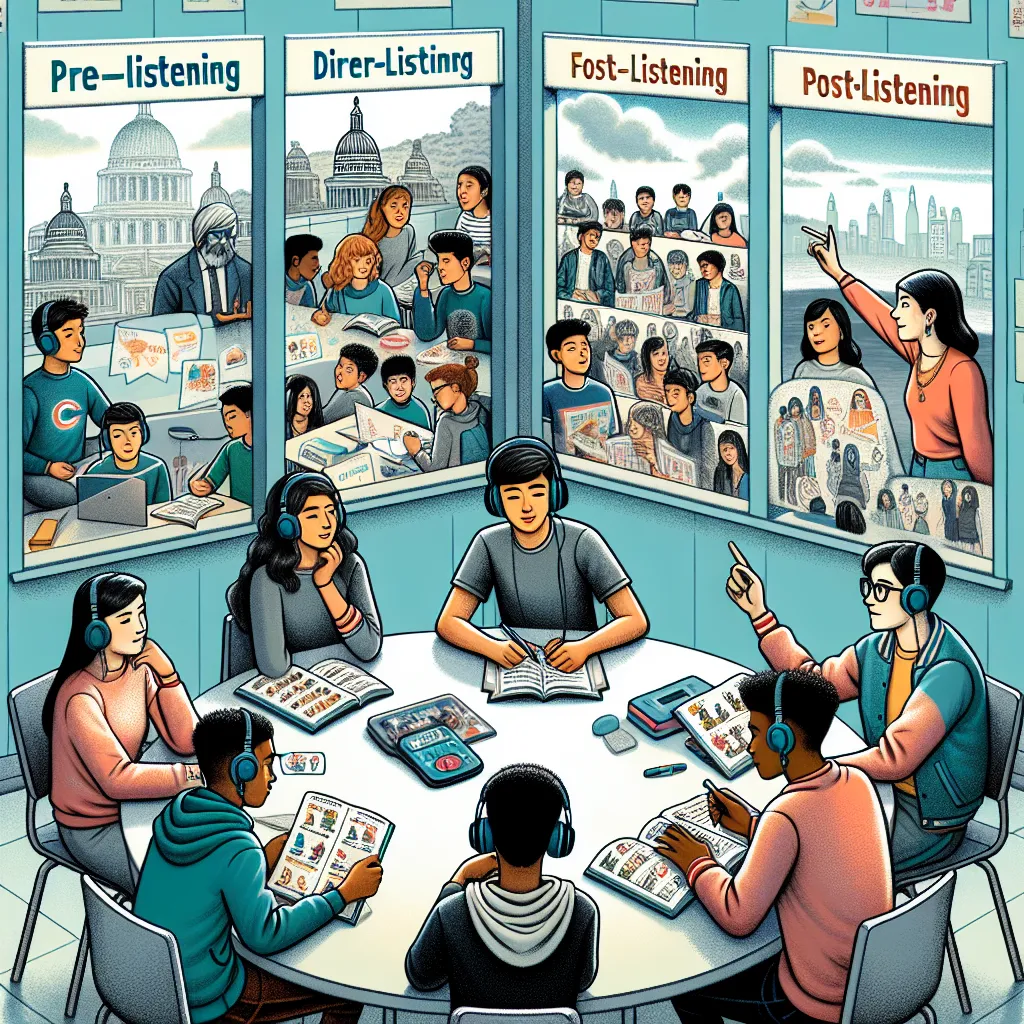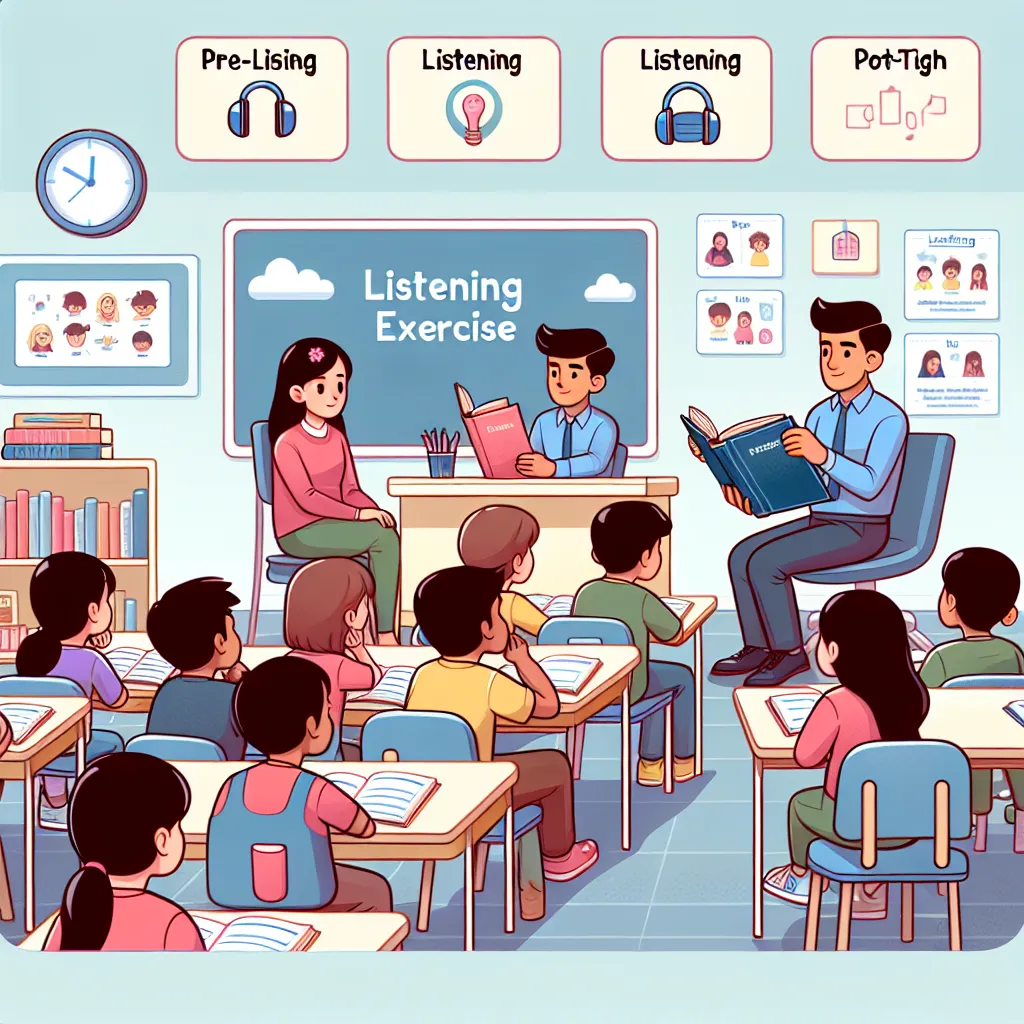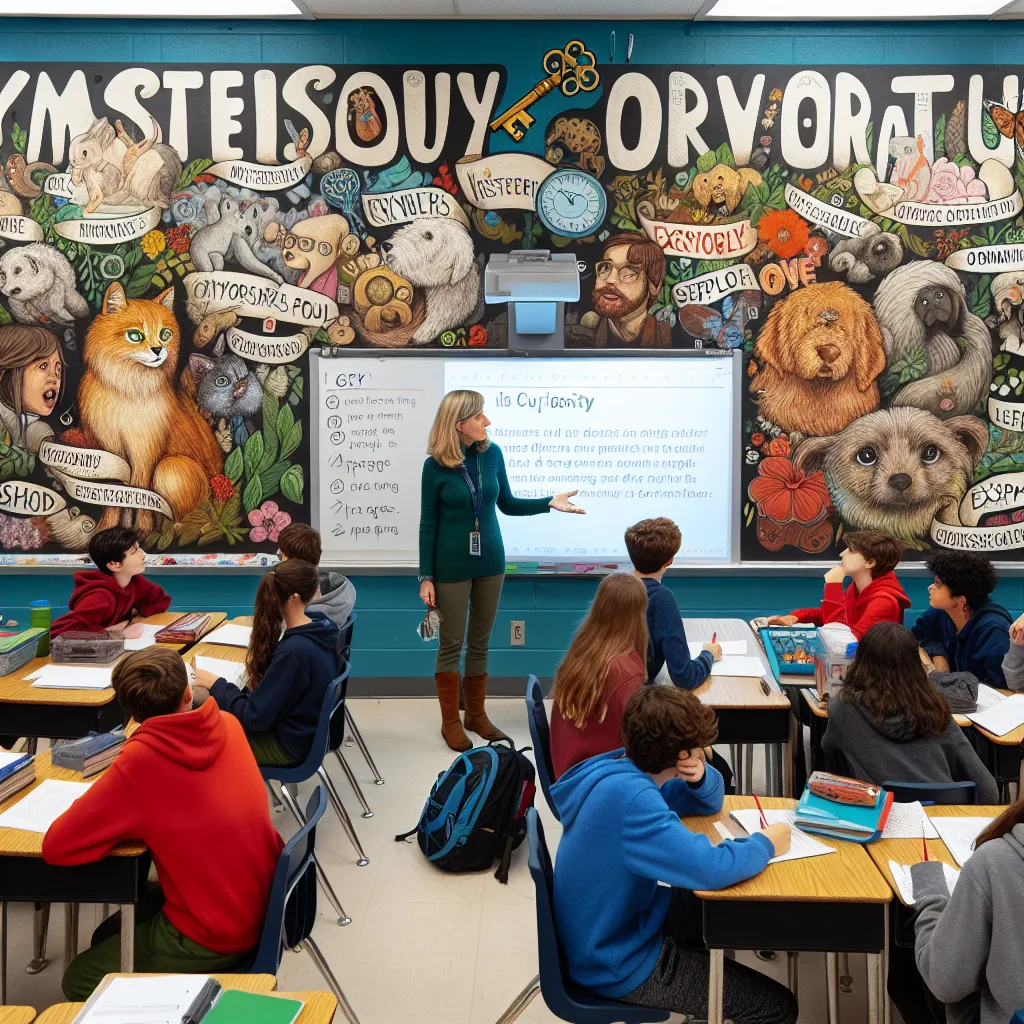Ask AI on The Internet
Question: Listening is a foundational skill in the process of learning any language. In an essay, explain how you would teach listening to a grade 7. In your discussion, include: 1. The pre-listening activities you would employ to prepare students for the listening task. Explain how these activities will activate prior knowledge and set a purpose for listening.
Teaching listening to grade 7 students requires thoughtful preparation and a structured approach that considers their developing cognitive skills, diverse backgrounds, and varying levels of language proficiency. Pre-listening activities form a crucial part of this process, as they help to activate prior knowledge, stimulate interest, and set a clear purpose for listening. Here’s a detailed explanation of how to effectively employ pre-listening activities to prepare students for a listening task: ### 1. Pre-Listening Activities **a. Discussing the Topic** - **Activity:** Begin with a brief class discussion about the topic of the listening passage. This could involve asking students what they already know about the subject or what they predict the listening passage will be about. - **Purpose:** This activity serves to activate students' prior knowledge, making the new information in the listening passage easier to process and connect with what they already know. It also piques students' interest and prepares their minds for focused listening. **b. Vocabulary Pre-teaching** - **Activity:** Introduce key vocabulary that will appear in the listening passage. This can be done through flashcards, word matching games, or a brief interactive activity where students guess the meanings of words from context. - **Purpose:** Familiarizing students with crucial vocabulary beforehand helps them follow the listening passage more smoothly and reduces the cognitive load, allowing them to focus on comprehending the overall message rather than getting stuck on unknown words. **c. Setting a Purpose for Listening** - **Activity:** Provide students with specific questions or a listening guide outlining what they should listen for. These might include main ideas, specific details, or the speaker's opinion on a topic. - **Purpose:** Establishing a clear purpose for listening directs students' attention and makes the task more meaningful. It also gives them a concrete goal to strive for, which can enhance motivation and engagement. **d. Predictive Activities** - **Activity:** Engage students in making predictions about the listening passage. Show them a related picture, play a short introductory clip, or give them the title and ask them to guess what the listening passage will cover. - **Purpose:** Making predictions uses students' existing knowledge and critical thinking skills, preparing them to actively listen to confirm or revise their guesses. This activity encourages active engagement with the content. **e. Brainstorming and Mind Mapping** - **Activity:** Facilitate a brainstorming session where students list everything they know about the topic, then organize their ideas into a mind map. - **Purpose:** This visual organization of thoughts helps students see the connections between their prior knowledge and the new information they’ll receive, creating a framework that aids in comprehension during the listening task. **f. Contextual Background Information** - **Activity:** Provide background information relevant to the listening passage. This can be done through a brief lecture, a reading passage, or a short video clip. - **Purpose:** Understanding the context of the listening passage enhances comprehension by giving students a framework within which to place new information. It also helps them understand the relevance and importance of the topic. ### Implementation Strategy To implement these pre-listening activities effectively in a grade 7 classroom, follow these steps: 1. **Begin with Engagement:** - Start the lesson with an engaging activity, such as a discussion or a prediction exercise, to grab students’ attention and create curiosity about the listening task. 2. **Build Vocabulary:** - Incorporate interactive and varied methods to teach key vocabulary, ensuring students can recognize and understand the terms when they hear them in the listening passage. 3. **Clarify Objectives:** - Clearly state the purpose of the listening activity and what students are expected to accomplish. Providing guiding questions or focus points can help maintain their attention throughout the task. 4. **Activate Prior Knowledge:** - Use brainstorming, mind mapping, and discussions to draw on students' prior knowledge and experiences, framing the listening activity within a familiar context. 5. **Contextualize the Content:** - Provide any necessary background information to fill gaps in students' understanding, enabling them to make sense of the listening passage. By methodically incorporating these pre-listening activities, you set the stage for a more effective and engaging listening experience. These activities not only prepare students for the immediate listening task at hand but also equip them with strategies that will enhance their overall language learning and listening skills.
Think your answer is better than the AI's? Post it below.
Question Tags
If you want your question answered by an AI, click here.







Post your own comment: